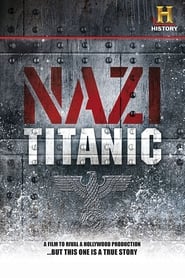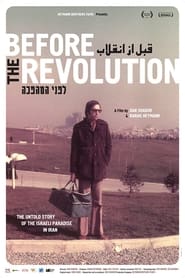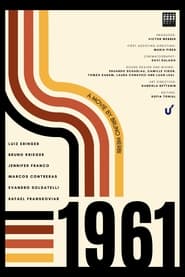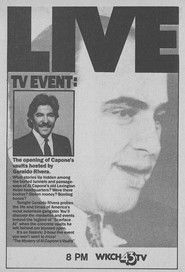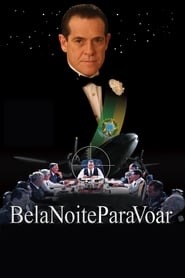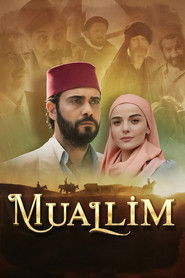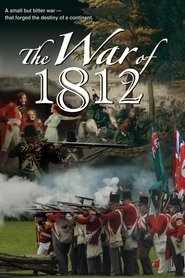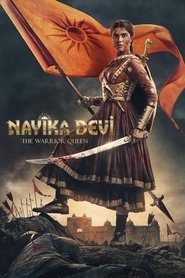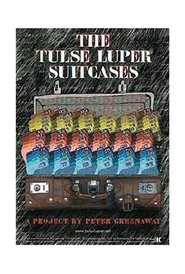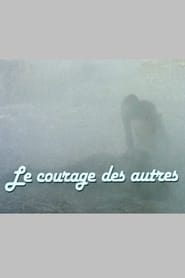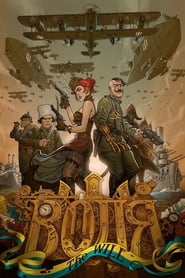Popular History Movies on Tub Tv - Page 339
-
Fall of the Shogun's Militia
1954
star 7Kondo Isami, the “Devil” commander of the Shinsengumi was one of Japan’s greatest national heroes and a peerless swordsman who devoted his life to protecting the shogun and fighting on the side of the Tokugawa. This tells the story of the Shinsengumi starting at the moment of their greatest triumph through the final battles as the Tokugawa shogunate was brought down. -
Nazi Titanic
2012
Nazi Titanic
2012
star 6.6During a bizarre chapter of WWII, Nazi propaganda minister Joseph Goebbels decided to make a movie based on the sinking of the Titanic. This epic film was so large in scale that the Nazis were forced to divert men, material and ships from the war effort in order to complete it. Titanic was filmed aboard cruise ship SS Cap Arcona in the Baltic Sea. The movie’s director Herbert Selpin was arrested by the Gestapo over comments he made about the ship’s crew and he was questioned by Goebbels. Selpin was found dead the next day in his cell. The Gestapo’s verdict was suicide. Titanic never received the impressive premiere that Goebbels intended, being first shown in Nazi-occupied Paris in 1943. We reveal this little known but fascinating story by looking at the making of the film, as well as the fate of the German ship Cap Arcona. -
Before the Revolution
2013
star 7.7A documentary thriller describing the last days of the Israeli community in Tehran, on the eve of the Islamic Revolution in 1979. The director, whose family was in Tehran at the time, uses rare archive materials to illustrate how thousands of Israelis, who enjoyed unusual affinity with the Shah's regime, wake up one morning to find their paradise vanished. -
1961
2023
1961
2023
star 9In 1961, father and son travel to Porto Alegre. Their severance leads both to unknown realities. -
The Mystery of Al Capone's Vaults
1986
The Mystery of Al Capone's Vaults is a two-hour live American television special that was broadcast in syndication on April 21, 1986, and hosted by Geraldo Rivera. It centered on the live opening of a secret vault in the Lexington Hotel in Chicago once owned by noted crime lord Al Capone. -
War Baby
2019
War Baby
2019
star 1Meet Duewand Collier Jr.-Male, 68 years old, American Citizen, a child conceived in the backdrop of the Philippines-American Mutual Defense Treaty, born and raised with Catholic guilt. He has made peace with his past and now tells his story-a story of love. -
Irena Sendler
0000
Irena Sendler
0000
2008 Nobel Prize nominee, Irena Sendler, saved 2500 children from the Warsaw Ghetto during World War II. Based on a true story. -
Bela Noite Para Voar
2009
Bela Noite Para Voar
2009
star 6.4A day in the life of Brazilian president Juscelino Kubitschek, in a troubled period of his term, while he maintains a secret love affair. -
Muallim
2021
Muallim
2021
star 3.4After completing his studies in France, young Ali gets exiled to an Anatolian town, where he becomes a teacher and begins to question his own beliefs. -
The War of 1812
2011
The War of 1812
2011
star 8The War 1812 is a two-hour film history of a deeply significant event in North American and world history. The war shaped American, Canadian and British destiny in the most literal way possible: had one or two battles or decisions gone a different way, a map of the United States today would look entirely (and shockingly) different. The fires of this war forged the nation of Canada; at the same time, the result tolled the end of Native American dreams of a separate nation. By war's end, the process of Native nation removal had already begun in the southeast, paving the way for a Cotton Kingdom powered by slavery, and a United States that had been on the verge of collapse was ready to announce its arrival as a global power. The U.S. did not win the War of 1812, but the noble experiment of democracy had managed to survive intense pressure from without, and within. -
Nayika Devi: The Warrior Queen
2022
star 8.5Nayika Devi, the Warrior Queen is a Historical drama set in the 12th century. The film is about India's first female warrior. -
The Tulse Luper Suitcases: Antwerp
2003
star 4"Antwerp" continues telling the picaresque adventures through the world of multi disciplinary artist and professional prisoner Tulse Luper. This movie premiered at the Venice Film Festival as a separate title located between the first and the second part of the Greenanway Tulse Luper Trilogy. -
The Covenant
2013
The Covenant
2013
star 2Experience the pain of Egyptian slavery through the eyes of Moses' mother as she sets down her baby in to the Nile, the loyalty of Ruth as she pledges herself to Naomi and her God, and the turmoil of the Jews in Babylonian exile. Face the challenge with Esther as she risks her life to plead for her people, and see the suffering of the Jews in Jerusalem under Roman occupation. In the dark centuries following, The Covenant brings you to Shabbat tables of the persecuted Jewish families in Diaspora, ending in the Warsaw ghetto, and culminating in the Holocaust and the promised rebirth of the Jewish State in 1948. -
The Courage of Others
1982
An inside look at slavery in the country of Burkina Faso, The Courage Of Others follows the journey of a slave (played by Sotigui Kouyaté) being taken across the African desert by his captors. -
The Will
0000
The Will
0000
Adaptation of the cult Ukrainian comic book about the alternative history of Ukraine after it's independence in 1918. -
J.
2008
J.
2008
star 5.4Found memories decayed by the shock patterns of childhood trauma. This films is made mostly with footage found in the bin of an ophanage. The white progressivelly disolve within a darknest more and more dense. Faces progressivelly disolves within one another. -
Rise and Fall of the Berlin Wall
2009
In August 1961, a few railway cars and barbed wire divided East Germany from West. It was a barrier that would be extended and become increasingly more sophisticated, a technological counter to each escape attempt. Computer imagery reconstructs how the Berlin Wall grew from a meager obstacle to a 97 mile barrier of concrete slabs, watchtowers and guards. -
André Chénier
1910
André Chénier
1910
star 4.2The life of French poet André Chénier, precursor of the Romantic movement, who was guillotined during the Revolution aged only 31.
 Netflix
Netflix
 Amazon Prime Video
Amazon Prime Video
 Apple iTunes
Apple iTunes
 Apple TV Plus
Apple TV Plus
 Disney Plus
Disney Plus
 Google Play Movies
Google Play Movies
 Paramount Plus
Paramount Plus
 Hulu
Hulu
 HBO Max
HBO Max
 YouTube
YouTube
 fuboTV
fuboTV
 Peacock
Peacock
 Peacock Premium
Peacock Premium
 Amazon Video
Amazon Video
 The Roku Channel
The Roku Channel
 AMC+
AMC+
 Kocowa
Kocowa
 Hoopla
Hoopla
 The CW
The CW
 Vudu
Vudu
 Starz
Starz
 Showtime
Showtime
 PBS
PBS
 Pantaflix
Pantaflix
 FXNow
FXNow
 Tubi TV
Tubi TV
 Kanopy
Kanopy
 Comedy Central
Comedy Central
 Crunchyroll
Crunchyroll
 Microsoft Store
Microsoft Store
 Redbox
Redbox
 Sun Nxt
Sun Nxt
 ABC
ABC
 DIRECTV
DIRECTV
 Crackle
Crackle
 Fandor
Fandor
 Plex
Plex

